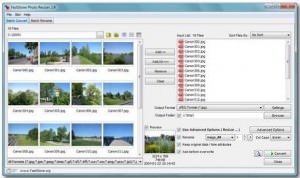Hosting Images for Your Website
Images have the power to make a website attractive, demonstrate products or services to clients and communicate value in a way that enhances content. Those who rely on images for any of these reasons also know that image files take up a lot of space. For those with limited space and many pictures on their site, hosting their images on another platform warrants consideration. There are lots of free photo hosting sites, with Flickr being the most popular.
How it Works
To get started hosting images on Flickr, you need to create an account, then use the service’s tools to upload your images. You may wish to title the images, enter tags so Flickr users can find them and fill out other data about the images. This can help users that stumble upon your photos understand what they are, and may even drive traffic to your website. It would be beneficial to sign up for a pro Flickr account, so you can have unlimited uploads, storage and albums along with statistics for your account.
Once you’ve uploaded all website images to your photo sharing platform, associate them with your website so that the photos show up. First, get the image URL of the individual image. In Flickr, you can do this by clicking on the Share button above the picture. Copy the URL associated with the image. Next, navigate to your website or blog, click on the image icon to add an image, choose the URL option and paste the Flickr URL. Click save and your image will now load via Flickr. It’s possible to just drop the URL into an HTML tag for pictures, too, if you’re inclined to code it manually.
If you use WordPress to host your site, a Flickr plugin makes pulling Flickr images into your site even easier. Install the Flickr Photo Album for WordPress plugin. When the plugin is installed, you’ll notice the Flickr icon appears in your upload options and easily allows you to select Flickr images just like you would choose to upload an image.
Companies That Host Website Images on Flickr (or other sites)
Many companies use Flickr to store images for their websites. Rackspace Hosting, a cloud hosting company, uses it to store photos of company events and even exciting days in the office, like when TOMS Shoes’ founder dropped by. Smaller companies are getting in on the action, too. Adventure Tours Australia logs photos from their tour groups onto their rather exciting Flickr Stream. Some people, like Dave Smith, try the Flickr route for a while before switching to hosting on the website. The best option for you may depend on your current needs, growth direction, and Web host.
Pros and Cons
Before you jump into hosting your site images on Flickr, think about whether or not it’s the right choice for you. Pros to hosting your images on Flickr or other services include:
- Facilitates sharing
- Gives your website cross-promotion
- Takes up less space on your website’s server
- Easy to use
- Presents images in attractive manner
- Provides file backup
Downsides of hosting your images this way include:
- You might need to pay to get the level of service you need
- Potentially slow image loading times when Flickr is busy
- Images are stored separately from your website, and are out of your control
Whether you decide to store images on your Web server or an alternate host, don’t underestimate the importance of website images to attract and entice the customer, and further enhance a site. As the saying goes, a picture is worth a thousand words.
Author Bio:- Rackspace® Hosting is the service leader in cloud computing providing Fanatical Support® to customers across a portfolio of IT services, including Managed Hosting and Cloud Computing.






